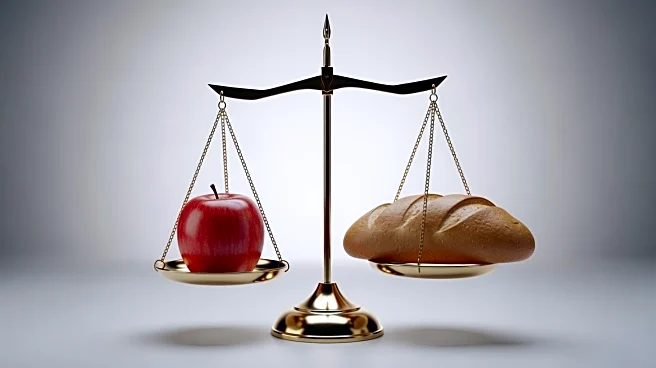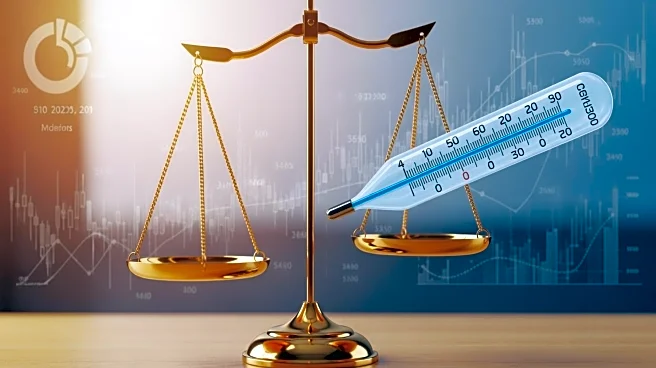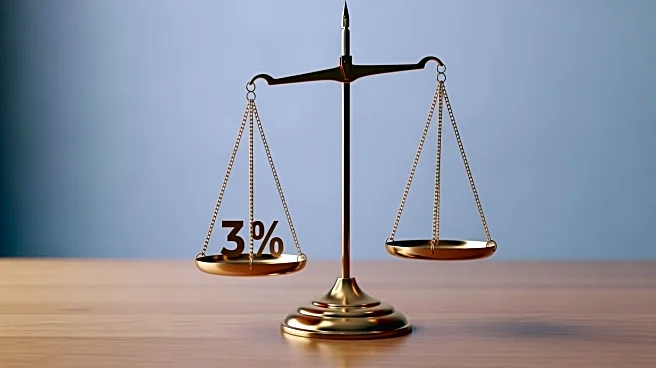What's Happening?
The Federal Reserve is preparing to make its next interest rate decision on Wednesday, amidst a government shutdown that has led to a near-total blackout of federal economic data. Despite this, the Labor Department released the Consumer Price Index report,
showing a 3% inflation rate last month, which was cooler than expected. This has opened the door for a potential rate cut. Economists predict a 96.7% probability of a 0.25 percentage point rate cut, which would lower the benchmark rate to a range of 3.75% to 4%. This decision follows the Fed's first rate cut of 2025, aimed at addressing concerns about a slowing labor market.
Why It's Important?
The Fed's decision is crucial for the U.S. economy, as interest rates directly impact borrowing costs for consumers and businesses. A rate cut could stimulate economic activity by making loans more affordable, potentially boosting spending and investment. The decision also reflects the Fed's dual mandate to manage inflation and unemployment, balancing economic growth with price stability. The rate cut could influence financial markets, affecting stock prices, bond yields, and currency exchange rates. It also highlights the challenges faced by policymakers in navigating economic uncertainties amidst limited data availability.
What's Next?
The Fed's decision will be closely monitored for indications of future monetary policy directions. Economists expect further rate cuts in December, which could lower borrowing costs further and stimulate economic growth. The impact on credit products, such as mortgages and loans, will be significant, potentially affecting consumer spending and housing markets. The Fed's actions will also influence investor sentiment and market dynamics, shaping economic prospects for the coming months.
Beyond the Headlines
The decision underscores the importance of reliable economic data in policymaking, highlighting the challenges posed by the government shutdown. It also reflects broader economic trends, including inflation control and labor market dynamics. The Fed's actions are part of a larger strategy to support economic stability and growth, amidst global uncertainties and geopolitical tensions. The decision will have long-term implications for U.S. economic policy and financial markets.













